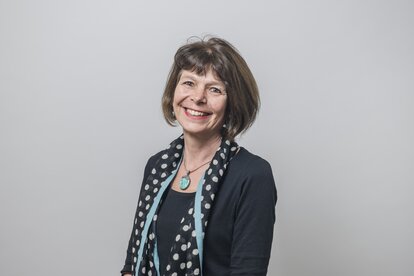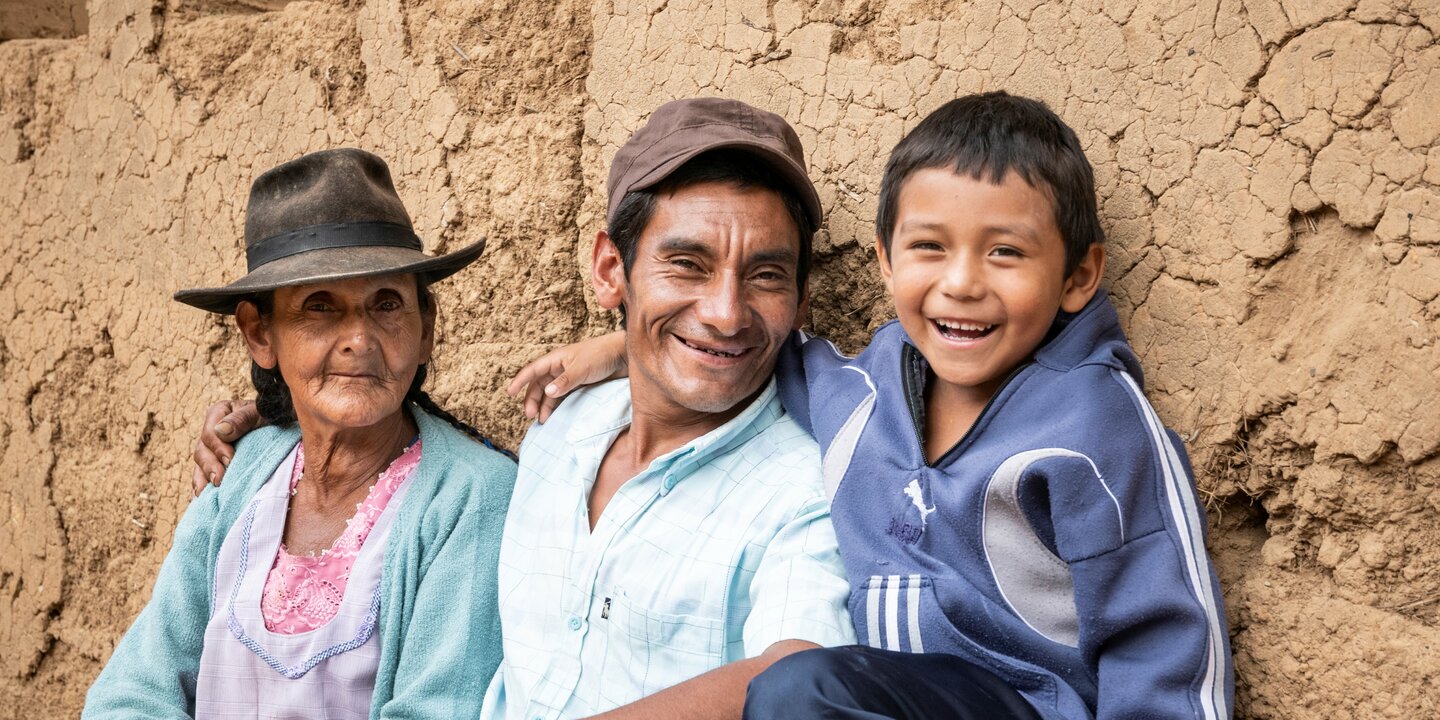With Mohan Bhatta and Rubika Shrestha
Shivu Sharma looks older than his 39 years, but this is not surprising given his life experiences. Born into a labourer family, he has also worked as a labourer most of his life – mainly in India, where he is currently employed in the furniture industry. We only happen to meet him as he has returned home for 15 days to build his family toilet. The non-local materials for its construction (bricks up to plinth level, pan, and cement ring) are being provided through the water supply and environmental sanitation project in the emerging town of Katarniya, supported through the Swiss Water Consortium – coordinated by Helvetas. This particular initiative is led by Helvetas-Nepal, in collaboration with Terre des Hommes and the Swiss Red Cross. Until now, Shivu and his family – wife, mother, two daughters and one son – had no toilet. “We are poor people – what to do? We have to go to the forest. I know that this is dirty and that you are more likely to get sick; of course it’s better to have a toilet.”
Shivu’s family is one of 415 households that belong to the Katarniya Water Users and Sanitation Committee (WUSC). It is furthermore one of 50 of these households that is too poor to have their own toilet, and has been supported to build one. Another such household is that of 62 year-old Kevoli Yogi, who lives alone – her one daughter having married and moved away. Previously she used the toilet of a neighbour, but she is very happy to be about to have her own (it is also under construction).
The Katarniya Water Users and Sanitation Committee
The Katarniya initiative is interesting in that it represents a community approach to water supply and sanitation in what is a small emerging town. Most of the residents in this Terai (plain) roadside settlement originate from elsewhere, but moved to the area within their own lifetime, or that of their parents or grandparents. Predictably, when support for a drinking water and sanitation scheme was announced, it was the more well-to-do households that came forward first. As explained by the WUSC chairperson, Dhana Prasad Adhikari, in his locality one spring was used by 15 households, and they wanted to have an individual piped water supply to each house. Ranjita Dhital, a committee member, further elaborated that they wanted to have clean water to be able to wash white clothes really white. Both aspirations are perfectly reasonable, although not of the same level of sanitary importance as having access to a toilet. What all members of the WUSC quickly realised, though, was that a toilet for everyone in the locality was a crucial provision for a clean water supply.
Truly Open Defecation Free (ODF)
A base line study showed that although Katarniya town had been declared Open Defecation Free (ODF), this was not quite the reality. As already noted, 50 households either had no access to a latrine, or used their neighbour’s. In addition, the latrines of 220 households were of the single pit model which is prone to overflowing during heavy rains. When this happened, people reverted to open defaecation. Furthermore, emptying the pits manually and spreading the faecal sludge on the fields was a real challenge.
With the support of the Swiss Consortium, which provided the initial capital, the WUSC has recently established a revolving fund of NRs 500,000 (approx. USD 48,200) so that poorer members of the community can access loans to improve their sanitation infrastructure. Loans are provided at merely 5% interest per annum (a rate rarely available in Nepal) and can be taken for gaining a direct water connection to the house, improving the type of latrine, connecting a latrine to a biogas unit, or some other innovative sanitary improvement. The WUSC reports that 213 households have taken upgraded to their latrine to the double pit model using this loan facility.
Clean drinking water
Drinking water systems in the Terai require considerable investment, as water has to be reached by tube-well, and then pumped for storage into an overhead tower, from which it is distributed by gravitational flow. The construction of the Katarniya water tower was led by the WUSC, which selected the contractor, purchased the materials, oversaw the construction, and contributed all the labour. The tower is now nearly complete, and will shortly become operational. It has been designed with resilience in mind; strut beams connected to the columns of the tower at several height intervals ensure that the structure is highly stable and should survive any future earthquake. The financial model devised entailed a contribution both from what were, at the time, the District Development Committee and the Village Development Committee, as well as from the Swiss Water Consortium. Under Nepal’s new federal structure, the WUSC will own, operate and maintain the water supply scheme using funds collected through a water tariff. The local municipality of Barbardiya Municipality will monitor the scheme, and support any major maintenance work as necessary.
As experience in many places has shown, ensuring a clean drinking water supply is not the same as enjoying safe drinking water. Good hygiene practices are also essential – a message that is regularly repeated in WUSC meetings.





